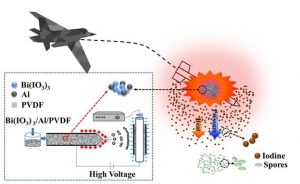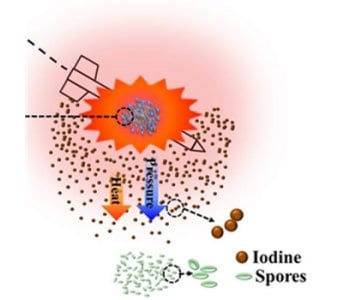 One of the grave dangers modern societies have to concern themselves with is bioterrorism. A small mobile factory processing bacteria spores requiring neutralization would in one of the scenarios be targeted from the air. In such a scenario a traditional munition would deliver high intense overpressures that would disperse the toxic material leading to negative collateral effects. New strategies are required that deliver intense heat pulses, small overpressures and leave behind a remnant biocide to finish the job that the thermal pulse may not have accomplished.
One of the grave dangers modern societies have to concern themselves with is bioterrorism. A small mobile factory processing bacteria spores requiring neutralization would in one of the scenarios be targeted from the air. In such a scenario a traditional munition would deliver high intense overpressures that would disperse the toxic material leading to negative collateral effects. New strategies are required that deliver intense heat pulses, small overpressures and leave behind a remnant biocide to finish the job that the thermal pulse may not have accomplished.
This paper by M. Zachariah et al. reports on the formation of composite energetic material using a novel electrospray 3-D printing approach. This approach enables the incorporation of high mass loadings of nanoscale metallic fuel particles, which have a higher energy density and are known to react faster, within a reactive polymer binder. Simultaneous electrospray deposition of a very strong oxidizer is also deposited within a polymer matrix, which itself has reactive properties. The oxidizer also has the property of both vigorous reaction with the nanoparticle fuel thus generating heat, plus a component that generates elemental iodine as a remnant biocide. The results indicate that formulation with high mechanical integrity and high and tunable reactivity can be produced. Characterization of reaction products do show the evolution of elemental iodine. This approach to materials fabrication enables tailed formulations to optimize the desired effect, which go beyond the particular architecture and application described here.

















